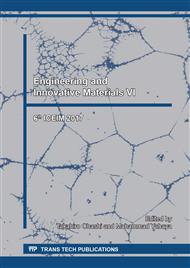[1]
X. Li and A. M. Bassiuny: Int. J. Mach. Tools Manuf., Vol. 48 (2008), No. 5, pp.576-588.
Google Scholar
[2]
T. Nonaka, Y. Sakata, Y. Marumo, Y. Okinishi, T. Horinouchi, I. Ogawa and S. Watanabe: Appl. Mech. Mater., Vol. 182-183 (2012), pp.472-476.
DOI: 10.4028/www.scientific.net/amm.182-183.472
Google Scholar
[3]
B. A. Behrens, A. Bouguecha, C. Buse, K. Wölki and A. Santangelo: Arch. Civil Mech. Eng., Vol. 16 (2016), No. 4, pp.724-733.
DOI: 10.1016/j.acme.2016.04.012
Google Scholar
[4]
D. Y. Sari, T. -L. Wu and B. -T. Lin: Int. J. Adv. Manuf. Technol., Vol. 88 (2017), No. 5, pp.2275-2285.
Google Scholar
[5]
K. Siegert, M. Ziegler and S. Wagner: J. Mater. Process. Technol., Vol. 71 (1997), No. 1, pp.126-133.
Google Scholar
[6]
J. Koyama and M. Yang: J. Jpn. Soc. Technol. Plast., Vol. 51 (2010), No. 596, pp.898-902 (in Japanese).
Google Scholar
[7]
B. A. Behrens, C. Frischkorn and I. Lüken: Prod. Eng., Vol. 6 (2012), No. 4, pp.439-447.
Google Scholar
[8]
Z. Hamedon, K. Mori and Y. Abe: J. Mater. Process. Technol., Vol. 214 (2014), No. 4, pp.945-950.
Google Scholar
[9]
S. Sah, N. Mahayotsanun, M. Peshkin, J. Cao and R. X. Gao: J. Manuf. Sci. Eng., Vol. 138 (2016), No. 8, 091005.
Google Scholar
[10]
H. Saiki, Y. Sakata, S. Satonaka, Y. Marumo and Z. H. Zhan: Trans. Jpn. Soc. Mech. Eng., Ser. C, Vol. 59 (1993), No. 562, pp.1934-1939 (in Japanese).
Google Scholar
[11]
H. Saiki, Y. Sakata, Y. Marumo and Z. H. Zhan: Trans. Jpn. Soc. Mech. Eng., Ser. C, Vol. 60 (1994), No. 577, pp.3171-3176 (in Japanese).
Google Scholar
[12]
H. Saiki, Z. H. Zhan, Y. Marumo, S. Miyahara and T. Morooka: Trans. Jpn. Soc. Mech. Eng., Ser. C, Vol. 62 (1996), No. 593, pp.353-358 (in Japanese).
Google Scholar
[13]
S. Stancu-Niederkorn, U. Engel and M. Geiger: J. Mater. Process. Technol., Vol. 45 (1994), No. 1-4, pp.613-618.
Google Scholar
[14]
N. Hagino, J. Endou, S. Katoh and M. Ishihama: J. Jpn. Soc. Technol. Plast., Vol. 54 (2013), No. 632, pp.826-830 (in Japanese).
Google Scholar
[15]
T. Nonaka, Y. Sakata, Y. Marumo, Y. Okinishi, H. Horinouchi, I. Ogawa and S. Watanabe: Steel Res. Int., Special edition (2012), pp.387-390.
Google Scholar
[16]
R. Kakinoki, Y. Segawa, Y. Marumo, Y. Imamura, T, Nonaka and Y. Sakata: J. Jpn. Soc. Technol. Plast., Vol. 58 (2017), No. 676, pp.393-397 (in Japanese).
Google Scholar
[17]
Y. Segawa, T. Kuriyama, Y. Marumo, T. Lee, Y. Imamura, T, Nonaka and Y. Sakata: Int. J. Earth Sci. Eng., Vol. 10 (2017), No. 2, pp.170-174.
Google Scholar


